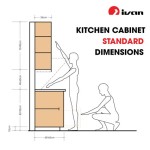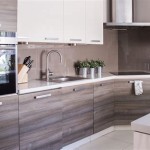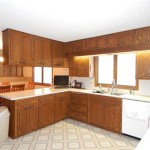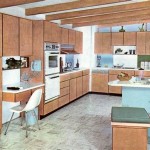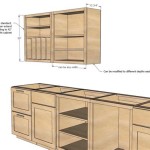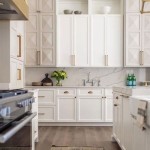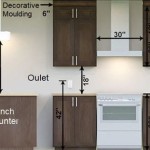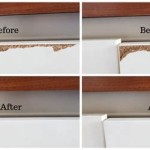How Expensive Is It To Replace Kitchen Cabinet Doors?
Kitchen renovations often involve significant financial investments, and one area homeowners frequently consider is replacing kitchen cabinet doors. This project offers a way to update the aesthetic of a kitchen without undertaking a full cabinet replacement, which can be considerably more expensive. However, understanding the cost implications of replacing cabinet doors is vital for effective budgeting and project planning. The overall expense depends on a variety of factors, including the type of door material, the complexity of the design, the hardware selected, and whether professional installation is required.
The cost of replacing kitchen cabinet doors can vary dramatically, ranging from a few hundred dollars to several thousands. This broad range reflects the diverse choices available to homeowners and the varying labor costs across different regions. A careful evaluation of individual needs and preferences, coupled with thorough research and price comparisons, is crucial in determining the overall budget for this type of renovation.
Factors Influencing the Cost of Kitchen Cabinet Door Replacement
Several key elements contribute to the final cost of replacing kitchen cabinet doors. Understanding these factors allows homeowners to make informed decisions and potentially identify areas where they can save money without compromising on the desired aesthetic or quality.
Material Selection
The material chosen for the cabinet doors is arguably the most significant cost driver. Different materials offer varying levels of durability, aesthetics, and price points. Common materials used for kitchen cabinet doors include wood, laminate, thermofoil, and metal. Each has its own advantages and disadvantages, impacting both the cost and the overall look and feel of the kitchen.
Solid wood is considered a premium option, offering natural beauty and durability. Hardwoods like maple, oak, cherry, and walnut are popular choices. The price of solid wood doors can fluctuate depending on the species, grade, and availability. Generally, hardwood doors are more expensive than other options. The cost of finishing (staining or painting) also adds to the overall expense of solid wood doors.
Laminate doors consist of a particleboard or MDF (Medium-Density Fiberboard) core covered with a decorative laminate layer. Laminate is a cost-effective alternative to solid wood, offering a wide range of colors, patterns, and textures. It is also relatively easy to clean and maintain. High-pressure laminate (HPL) is more durable and resistant to scratches and impacts compared to low-pressure laminate (LPL), but it is also more expensive.
Thermofoil doors are constructed from an MDF core wrapped in a thin layer of vinyl. Thermofoil offers a seamless, easy-to-clean surface. It is available in various colors and styles, including those that mimic the look of wood. Thermofoil is generally less expensive than solid wood or high-pressure laminate, but it can be susceptible to peeling or damage from excessive heat or moisture.
Metal cabinet doors, typically stainless steel or aluminum, offer a sleek, modern aesthetic. Metal doors are durable and easy to clean, making them suitable for contemporary kitchens. However, they can be more expensive than laminate or thermofoil options. The cost of metal doors also depends on the gauge of the metal and the finish applied.
Door Style and Design Complexity
The style and design complexity of the cabinet doors significantly impact the cost. Simple, flat-panel doors are generally less expensive to manufacture than doors with intricate details, raised panels, or custom carvings. The more complex the design, the greater the labor and materials required, resulting in a higher price.
Shaker-style doors, characterized by their clean lines and recessed center panel, are a popular and relatively affordable option. Raised-panel doors, featuring a raised center panel surrounded by decorative molding, are more expensive due to the additional craftsmanship involved. Arched or cathedral-style doors, with a curved or pointed top, also tend to be pricier than simpler designs.
Custom-designed doors, tailored to specific dimensions or aesthetic preferences, represent the most expensive option. Custom designs require specialized manufacturing processes and may involve the creation of unique molds or templates, adding to the overall cost.
Hardware and Accessories
The choice of hardware, including hinges, handles, and knobs, contributes to the overall cost of replacing cabinet doors. While seemingly small details, hardware can significantly impact the aesthetic appeal and functionality of the cabinets.
Basic hinges are relatively inexpensive, but higher-quality hinges, such as soft-close hinges, provide smoother operation and increased durability. Soft-close hinges prevent doors from slamming shut, reducing noise and wear and tear on the cabinets. Premium hinges often come with a higher price tag.
Handles and knobs come in a wide variety of styles, materials, and finishes. Simple, utilitarian knobs are generally the most affordable option. More elaborate handles, crafted from materials like stainless steel, brass, or crystal, can significantly increase the overall cost. The choice of finish, such as polished chrome, brushed nickel, or oil-rubbed bronze, also affects the price.
Additional accessories, such as decorative moldings, glass panels, or interior organizers, can further enhance the appearance and functionality of the cabinets, but they also add to the overall expense.
Professional Installation vs. DIY
The decision to hire professional installers or undertake the installation as a DIY project also affects the cost. Professional installation ensures accurate alignment, proper fitting, and a polished finish. However, it also involves labor costs, which can range from $50 to $150 per door, depending on the complexity of the installation and the regional labor rates.
DIY installation can save on labor costs, but it requires a certain level of skill and experience. Accurate measurements, careful alignment, and the proper use of tools are essential for a successful DIY installation. Mistakes can lead to misalignment, gaps, or damage to the cabinets, potentially adding to the overall cost in the long run.
Homeowners considering DIY installation should carefully assess their skills and experience before proceeding. If unsure, it is best to consult with a professional installer to obtain an accurate estimate and ensure a satisfactory outcome.
Estimating the Cost: A Practical Approach
To obtain a realistic estimate of the cost of replacing kitchen cabinet doors, homeowners should follow a systematic approach. This involves taking accurate measurements, selecting materials and styles, obtaining quotes from multiple suppliers or contractors, and factoring in installation costs.
Begin by measuring the existing cabinet doors accurately. Measure the height, width, and thickness of each door. It is crucial to measure each door individually, as slight variations in size may exist. Note the type of hinge and its location on the door frame. This information is essential for selecting compatible replacement doors.
Next, research different materials and styles to determine the desired aesthetic and budget. Obtain samples of different materials and finishes to evaluate their appearance and durability. Consider the overall design of the kitchen and choose doors that complement the existing décor.
Request quotes from multiple suppliers or contractors. Provide them with accurate measurements and specifications to ensure accurate pricing. Compare the quotes carefully, paying attention to the materials, labor costs, and any additional fees. Ask for references and check online reviews to assess the reputation and quality of workmanship of the suppliers or contractors.
Factor in the cost of hardware and accessories. Choose hinges, handles, and knobs that complement the style of the doors and provide the desired functionality. Consider the cost of additional accessories, such as decorative moldings or glass panels.
Determine whether to hire professional installers or undertake the installation as a DIY project. If considering DIY installation, assess the required skills and experience. If hiring professional installers, obtain quotes from multiple contractors and compare their labor rates. Consider the additional costs, such as travel fees or disposal fees for old doors.
Cost-Saving Strategies
Homeowners looking to reduce the cost of replacing kitchen cabinet doors can explore several cost-saving strategies. These strategies involve making informed choices about materials, styles, and installation methods.
Consider Alternative Materials
Choosing less expensive materials, such as laminate or thermofoil, can significantly reduce the overall cost. These materials offer a wide range of colors and styles, mimicking the look of wood at a fraction of the price. While not as durable as solid wood, laminate and thermofoil doors can provide a cost-effective solution for updating the kitchen aesthetic.
Opt for Simpler Door Styles
Selecting simpler door styles, such as flat-panel or Shaker-style doors, can lower manufacturing costs. Intricate designs and custom carvings add to the complexity of the manufacturing process, resulting in higher prices. Simple door styles offer a clean, contemporary look and can be easily customized with different hardware options.
Reface Existing Cabinets
Instead of replacing the entire cabinet door, consider refacing the existing doors. Refacing involves applying a new veneer or laminate layer to the existing doors. This can be a more cost-effective way to update the appearance of the cabinets without replacing the entire door. Refacing is suitable for doors that are structurally sound but have cosmetic imperfections.
Purchase Unfinished Doors
Purchasing unfinished doors and applying the stain or paint yourself can save on finishing costs. Unfinished doors are typically less expensive than pre-finished doors. Applying the finish yourself allows for greater control over the color and sheen. However, it requires proper preparation, application techniques, and the necessary tools and equipment.
Shop Around for Hardware
Compare prices from multiple suppliers for hardware. Prices for hinges, handles, and knobs can vary significantly. Look for sales or discounts to further reduce the cost. Consider purchasing hardware in bulk to take advantage of volume discounts.
DIY Installation (If Capable)
If comfortable with DIY projects, consider installing the doors yourself. This can save on labor costs, but it requires careful planning, accurate measurements, and the proper tools. Watch instructional videos and consult with experienced DIYers to ensure a successful installation.

Everything You Need To Know About Cabinet Door Replacement Costs Cabinetdoors Com

How Much Does It Cost To Replace Kitchen Cabinet Doors

The Cost Of Replacing Kitchen Cabinet Doors In 2024

How Much Does It Cost To Replace Cabinet Doors Now

Replace Kitchen Cabinet Doors Cost Localsearch

How Much Does It Cost To Replace Kitchen Cabinet Doors

Average Cost To Replace Cabinets Forbes Home

Replacement Kitchen Doors Cost In 2024 Checkatrade

Cost Of Replacing Kitchen Cupboard Doors

Reface Or Replace Your Kitchen Units Dream Doors
Related Posts

